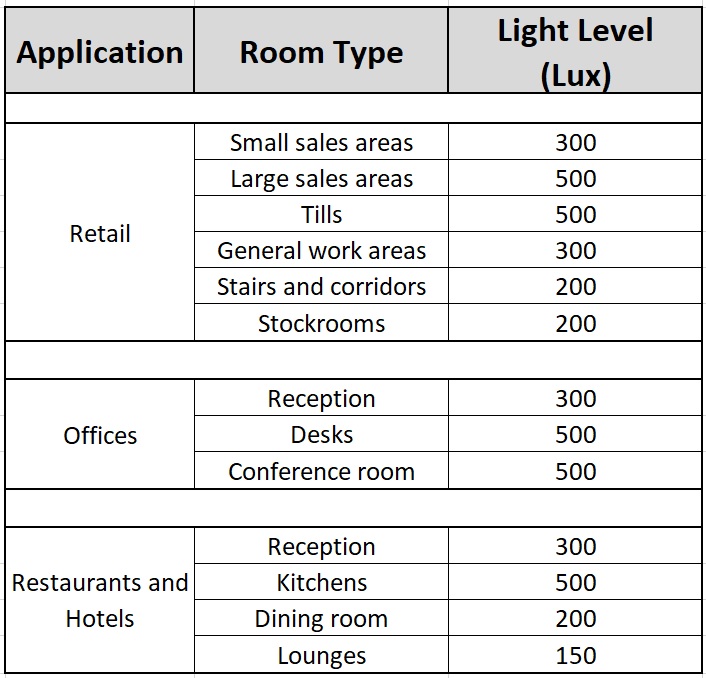The beauty of lighting not only lies in its functionality, but also in its quality. Over the next few weeks, we will uncover the various aspects of lighting quality, including topics such as:
- Lighting Levels
- Spatial distribution of light
- Directionality of light
- Colour of light
- Economics of light
- Light and the environment
Watch this space to catch the full discussion!
This week, we’re delving into lighting levels...
Understanding lighting levels
Lighting level or illuminance, is the amount of light measured on a plane. The work plane is where the most important tasks in the room or space are performed.
Lighting levels can range from natural illumination provided by moonlight (a few tenths of a lux) to as high as 100 000 lux (a hot summer’s day). What’s interesting to note is that lighting levels considered satisfactory under electric lighting, is in actual fact quite low depending on the task. The minimum requirement is based on OHASACT.

What is the effect of lighting levels?
Adaptation, in visual physiology, is defined as the retina’s ability to adjust to various levels of light. The adaptation state of the eye is determined by the lighting level. The effect of optimum lighting level is a higher adaptation state of the eye. In turn, this results in better contrast sensitivity and lowers the risk of uncomfortable glare. Moreover, when a visual task is considered quite challenging (i.e.: in terms of contrast, or size) a higher level of lighting is then required. Therefore, when a room is adequately lit with the correct lighting level, the effect is an improvement in the time it may take to perform a task, and a reduction in the risk of errors occurring.
How are planes used to determine lighting levels?
In most instances, the average illuminance on the horizontal plane is used to measure lighting level. In an office, the horizontal plan of the working area will be the desk. However, there are situations where the exact working area is unknown – so, how is lighting level measured then? Where the precise working area is not known, the lighting level on an imaginary horizontal surface approximately 75 centimeters above the floor is specified. In outdoor applications, such as street lighting, the road surface is used to measure lighting level. Furthermore, the lighting of vertical objects is also of importance. An example of this instance is in retail lighting, where the proper illuminance of product on vertical shelving makes it more enticing to shoppers and therefore, more likely to be purchased.

To learn more on lighting levels, click here to watch a quick video:
What is Lux?
Lux is used to measure the amount of lighting output in a given area. One lux equates to one lumen per square meter. Lux enables the measurement of the total ‘amount’ of visible light present and the intensity of the illumination on a surface. Here are some recommendations for adequate lux levels across various applications:

TIP:
Enjoy the benefit of having a light meter at your fingertips. Click here to download our recommendation for a lux light meter App (iOS).
Lighting Standards:
There are various national and international standards on the expansive range of outdoor and indoor lighting applications with specifications for lighting level values.
Click here to preview the South African National Standard for Interior Lighting, SANS10114-1:2020 Edition 4.
What’s next in this lighting quality series?
In the next article, we will be discussing the spatial distribution of light which will touch on topics such as luminance ratios and glare restriction.
Don’t miss out – subscribe to our newsletters and keep up to date on the latest technology and trends in electrical, lighting, water and solar!
Source: Signify “The Science of Lighting” by Wout van Bommel and Abdo Rouhana (2019: second edition)

